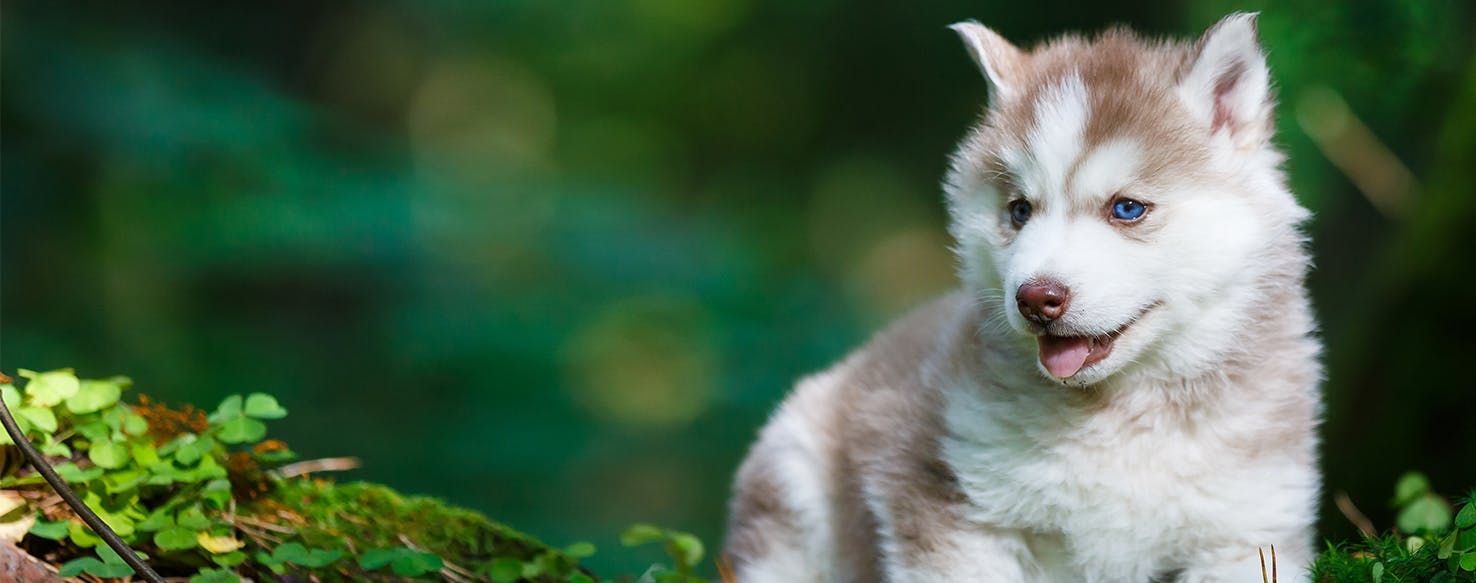- Home
- The Daily Wag!
- Senses
- Can Dogs Live in the Wild?

When you look into those big, puppy-dog eyes and pet your fluffy doggo, it's probably hard to imagine that at one point, your pooch's ancestors lived in the wild. Your pup is too sweet, too tame, and too docile to live in the harsh wilderness, right?
Wrong!
Whether you think so or not, your dog's ancestors were wild. Probably one of the first wild animals to be totally tamed, all dogs share a common ancestor in the small South Asian Wolf. In fact, your very-domesticated dog probably still shares some characteristics of wild dogs (marking their territory, defending what's theirs, and burying their prized possessions). That being said, though, could domestic dogs survive in the wild? It's possible, but it's also a little complicated! We've got all the details you need to know here!
If you're wondering what semblance of instinct is left in your dog and how you can tell if they'd be well-equipped and prepared to live in the wild, you'll need to be on the look-out for a few behavioral signs from your dog.
For example, if your pup is able to detect small bugs, rodents, or other teeny animals pretty well, it's likely that your pup is good at detecting and hunting down food, a sign of their ancestors. Their incredible sense of smell is another tell-tale sign that doggos could live in the wild, as well as their amazing sense of hearing.
If your dog is territorial - or has a habit of marking trees, rocks, fence posts, and other sites - this is another huge indicator that they'd be good at surviving in the wild. Territory is huge in the wild, and if your dog knows how to mark his or her territory, they might be on the right path for wildlife living.
Additionally, if your dog has a habit of burying bones, toys, or other prizes for future use, that's also a good indicator that they're equipped for the wild (like their ancestors).
Body Language
Here are some body language cues that might indicate that dogs are equipped for living in the wild:
- Alert
- Guarding
- Raise Ears
- Back Hair On Edge
- Stalking
- Tail Up
Other Signs
Here are a few other indicators to watch for:
- Burying Bones Or Other Toys
- Defending Territory Or Being Aggressive When Threatened
- Marking Territory
- Pack Mentality
The main reason that dogs now-a-days - both feral and domesticated - are able to survive so well in the wild is because they're historically linked to wild dogs, like the small South Asian Wolf. In fact, dogs - who have accompanied humans for some 10,000 years - were probably the first tame animals.
Even so, all dogs, despite their various shapes, sizes, temperaments, and breeds, are from the same species, Canis familarias. That means that dogs are related to wolves, foxes, and jackals, all of which are animals that survived, and continue to survive, in the wild and undomesticated.
Some people say that wolves were domesticated from dogs over 10,000 years ago - though, others claim it was much earlier than that, closer to 30,000 years ago. It's possible that people considered wolves as animals who could be domesticated because of their fierce pack mentality and loyalty.
It's also possible that dogs aided in their own domestication by scavenging off of human's spoils (aka, hunting carcasses left behind) or loitering around campfires - each time growing tamer and tamer with every passing generation. Genetically, dogs have been so cross-bred that their genes are homogeneous, states the Atlantic, according to the University of Oxford.
The neat thing about dogs is that, no matter how domesticated, they'll likely have some semblance of instinct left in them, so if your domesticated dog was ever left out in the wild, it's possible that they'd be able to adapt and learn how to survive. That being said, there are things you can teach your dog (in moderation) that could help them adapt better to the wilderness should they ever escape.
For example, if you were hypothetically going to train your dog to live in the wild, the human commands you've taught them (i.e., sit, stay, lay down) would be no use to them. Instead, you'd need to train your pup to eat certain plants, bugs, and hunt down small game like rabbits, mice, and squirrels. You can do this by learning how to train your dog to help you hunt.
Spending time outside with your dog to get them accustomed and comfortable with nature would be beneficial as well. This should help them get accustomed to the sounds, movements, and smells of the wild, and maybe even kick-start some of their survival mode.
Have questions or concerns about your pet?
Chat with a veterinary professional in the Wag! app 24/7.
Get Vet ChatWritten by a Great Dane lover Hanna Marcus
Veterinary reviewed by:
Published: 06/07/2018, edited: 04/06/2020
More articles by Hanna Marcus
